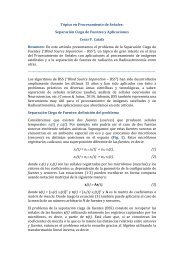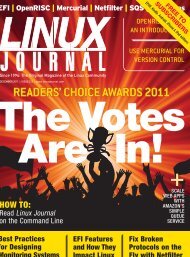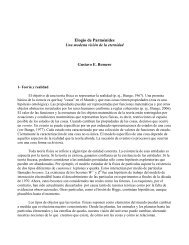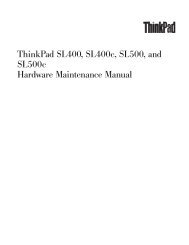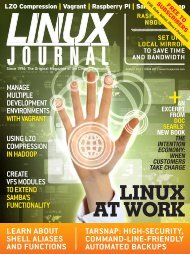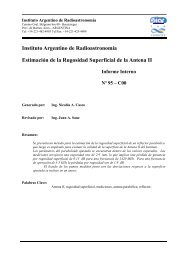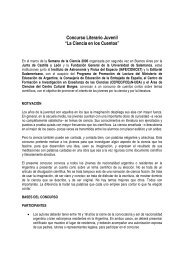Linux Journal | December 2012 | Issue 224 - ACM Digital Library
Linux Journal | December 2012 | Issue 224 - ACM Digital Library
Linux Journal | December 2012 | Issue 224 - ACM Digital Library
Create successful ePaper yourself
Turn your PDF publications into a flip-book with our unique Google optimized e-Paper software.
EOFall the best features for phonesthat run its Android software. Forexample, the iPhone app never gotspoken directions or vector maps(smooth lines, not tiles of pixels),long after those features had cometo rival phones.Apple has a variety of replacementdata sources, starting with TomTom,the Netherlands-based maker ofnavigation (mostly GPS) systems.TomTom’s primary data source is itsTele-Atlas subsidiary, which it acquiredfor 2.9 billion euros in 2008. The prioryear, Nokia acquired Navteq, Tele-Atlas’ main competitor, for 5.7 billioneuros. Google used Tele-Atlas as asource until October 2009, when itbecame its own primary data source.Google, Navteq and Tele-Atlas alldeploy special vehicles on streetsto create, correct and enhancemapping. In Google’s case, this alsohas included mapping of Wi-Fi accesspoints to fine-tune a user’s locationfurther. Microsoft, Google and Applealso have aerial views provided bothby satellites and low-flying aircraft.And all are feeding their cloudsand crunching up data gathered bywatching what users do.At this point, it would be easy todigress into vendor sports and handicapwhich of the map data sources andmobile device suppliers will win inthe marketplace. But instead, I wantto look at what all this says aboutdependencies. What we see here is thereplacement of the platform with theBig Data API—let’s call it a BiGDAPI—asa single source of market-making andmarket-breaking dependency.Google’s passive-aggressive mapapp game with Apple, and Apple’srefusal to keep playing it, are bothevidence of Google’s huge leveragethrough its map BiGDAPI.The term “Big Data” has been aroundfor a long time, but has obtainedbuzzphrase status only in the last twoyears. Although much that can be saidabout Big Data is positive and harmless(better medicine, better science, betteranalytic fodder for countless goodpurposes), one unspoken motivationbehind the buzz is obtaining highdegrees of market leverage. And muchof that leverage is not in harmonywith the constructive motivations andpractices behind free software, opensource and <strong>Linux</strong>. Because, behindmany of the big APIs are vast junglesof exclusive and patent-protectedfunctionalities and restrictions arounduse. Such as, for example, the spokenturn-by-turn directions Google wouldn’tallow Apple to use. It can be dispiriting110 / DECEMBER <strong>2012</strong> / WWW.LINUXJOURNAL.COM



